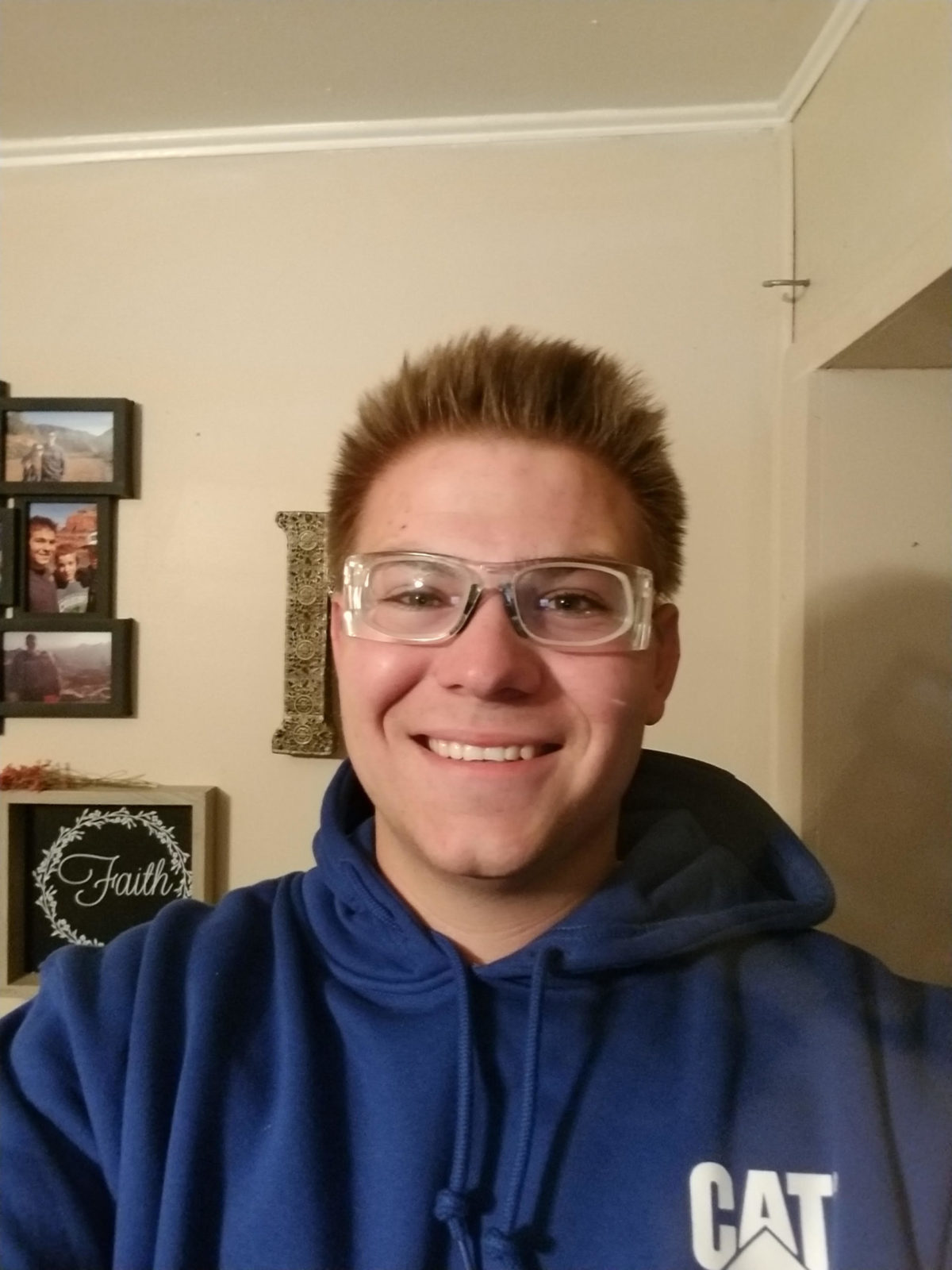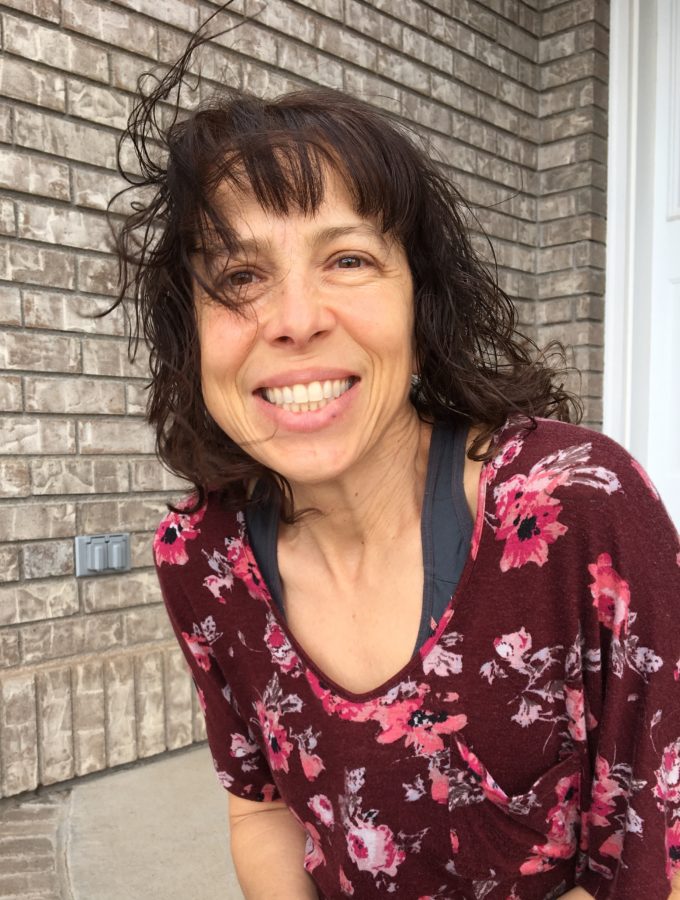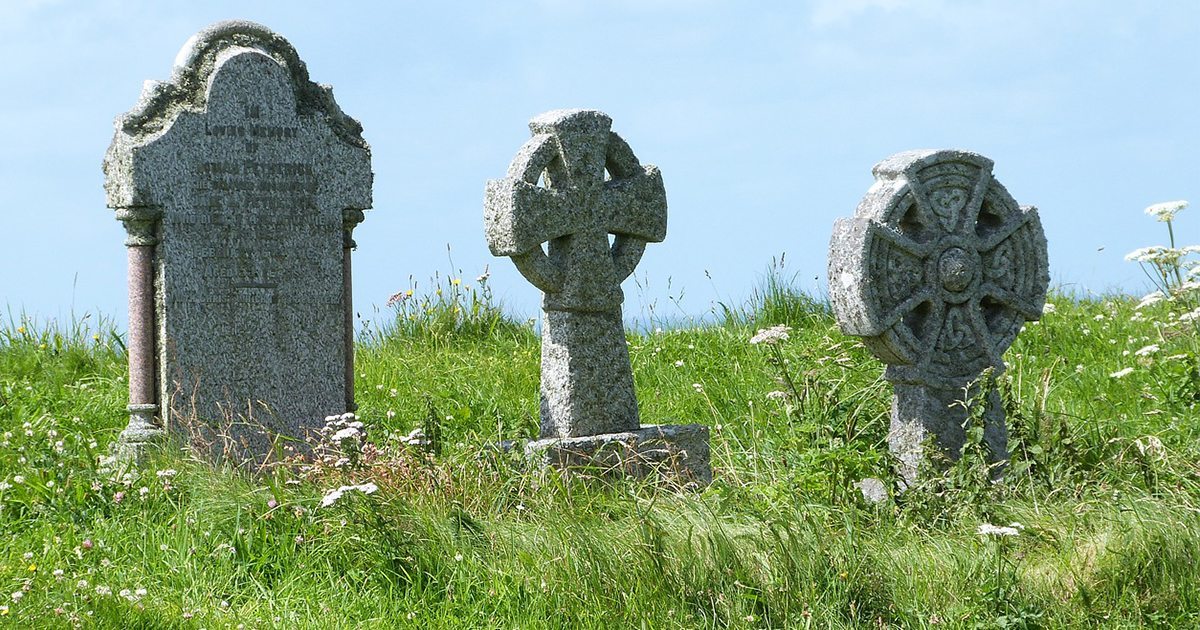Category: Scholarship

The World in Relationship to Asbestos – Devin Marsh
Early in my life I was unaware that natural materials could cause such devastation to the human body. I never knew that diseases such as mesothelioma could happen from people making normal life decisions. I always believed that people got sick from making poor choices, such as not wearing a coat on a rainy day. However, I was introduced to the effects of asbestos when I was in high school. The automotive teacher at the time became seriously ill, partially due to the exposure of asbestos in older brake systems. He was one of the sincerest teachers that I’ve ever met. He was somebody who never heard a dumb question, somebody who was happy to teach and looked forward to each day, and somebody who genuinely enjoyed educating others. In my opinion he rarely made poor choices and was an outstanding person, so I was confused as to why he became sick. It made me realize that there is a need for new materials that are less hazardous to the people around it. People deserve to go and work in a safe environment and be given every chance to prevent exposure to things like asbestos.
According to the World Health Organization, approximately 125 million people are exposed to asbestos in the workplace, and that in 2004, asbestos related lung cancer, mesothelioma and asbestosis from occupational exposures resulted in 107,000 deaths. These deaths could have been prevented by using an alternative source of materials when constructing buildings and other objects created using asbestos. With the education that I am receiving I hope to be part of the development process that creates alternative solutions to the use of asbestos in products and materials, particularly in third world countries. As a mechanical engineer I could apply positive and environmentally friendly problem solving to prevent exposure to asbestos. The United States Geological Survey states that from 1900 to 2003–when the last U.S. asbestos mine was shut down–the United States produced approximately 3.29 million metric tons of asbestos material. This reveals that there is still a large amount of asbestos material that still resides in people’s homes and offices. The future exposure to asbestos may not be entirely avoidable for individuals such as construction crews. Through the development of advanced prevention techniques and alternative solutions, the world will soon see the rapid decline of asbestos related diseases and deaths.
The more knowledge that is available about asbestos, and the dangers of it, increase the chances of public awareness. Even if one person were to know and wear the proper protection when dealing with asbestos, it would make the effort worth it. Asbestos is much more commonly found than just dust in old houses and automotive brake systems. It was an extremely popular material to use and was cheap to manufacture. It is still in many different products and materials that people handle every day. The Agency for Toxic Substance and Disease Registry states that the most at-risk industry for exposure to asbestos are construction workers. An estimated 1.3 million people participate on these worksites and risk exposure. With standards put out by OSHA these workers are relatively safe and well informed about the hazards and how to prevent exposure.
Foreign countries are where the focus of asbestos awareness should be. Asbestos.com highlights the facts that foreign countries use and produce asbestos with no restrictions. China is the world’s largest consumer of asbestos. In 2007 China used 626,000 metric tons of asbestos in daily production of an assortment of different materials. Russia, the world’s leading producer of asbestos, mined more than 1 million tons of asbestos in 2008, and shipped two-thirds of it to developing countries. Expeditions to educate both the government and the workforce in these countries should be initiated. This readily available material is regularly used with no restrictions or safety standards. The European Agency for Safety and Health at Work estimates that, “the annual death toll from Mesothelioma, lung cancer, and other asbestos related diseases in China may reach 15,000 by 2035”. The cost effectiveness of asbestos will mean that countries are unlikely to spring at the idea to an alternative material. However, I believe that more precautionary methods and personal protective equipment will bring exposure rates down by more than 45 percent in high risk environments.
To somebody fighting Mesothelioma or a family member who recently lost a loved one to the disease, I would say this: Do not feel like this is just a bad hand that you were dealt, it is not fair but it is also not in vain. Take confidence in the fact that your pain and suffering has been instrumental in raising change and awareness about the dangers of asbestos. Because of your hardship, future generations of the world are changing in a better way to avoid hazardous exposure.
Works Cited
- Virtra, Robert L. Worldwide Asbestos Supply and Consumption Trends from 1900 through 2003. USGS, 23 Nov. 2016, pubs.usgs.gov/circ/2006/1298/.
- “International Program on Chemical Safety.” World Health Organization, 2018, www.who.int/ipcs/assessment/public_health/asbestos/en/.
http://www.who.int/ipcs/assessment/public_health/asbestos/en/ - “Asbestos Toxicity Who Is at Risk of Exposure to Asbestos?” Environmental Health and Medicine Education, ATSDR, 9 Aug. 2016, www.atsdr.cdc.gov/csem/csem.asp?csem=29&po=7.
- Persaud, Nadia. “6 Countries to Watch for Asbestos Use and Abuse.” Asbestos.com, Mesothelioma Center, 7 Mar. 2017,
www.asbestos.com/blog/2011/12/06/6-countries-to-watch-for-asbestos-use-and-abuse/. - Morris, Jim, and Te-Ping Chen. “Top Asbestos User China Faces Epidemic of Cancer.”Dangers in the Dust, International Consortium of Investigative Journalists, 21 July 2010, www.icij.org/investigations/dangers-dust/top-asbestos-user-china-faces-epidemic-cancer/.

Kelley McGill Asbestos Scholarship Essay
Over the past year, my family has been challenged in so many ways due to a cancer diagnosis that was caused by asbestos. In November of last year, my grandfather was diagnosed with Stage 3 Small Cell Lung Cancer. This came as a complete surprised to our family due to the fact that my grandfather has always been very conscious about his health, makes healthy food choices, is compliant with all medications and very active in exercise. The weeks following diagnosis we learned that his cancer metastasized to his spine, C-2 and T-2, as well as his liver. His Oncologist broke the news that his cancer was terminal and that treatment would not cure the disease. As our family conducted research into what could have caused the cancer to form in his body, asbestos became a probable cause.
In his younger years my grandfather worked as an electrical engineer. Throughout his career, he worked at several industrial sites and power plants. Through extensive research, the discovery was made that many of the companies he was working for had asbestos cases open against them. These cases were for positive asbestos findings and even dated back to when my grandfather was an employee. The physicians confirmed that due to his work in these affected power plants and factories that asbestos was the main cause of his cancer. With his diagnosis in hand, I decided to educate myself more about asbestos so that I can be better informed about my grandfather’s cancer and able to provide clarity to questions from my friends and family.
Throughout this process I have learned a great deal about asbestos. There are two types of asbestos: Chrysotile and Amphibole. Chrysotile, or white asbestos, is commonly found in the industrial settings, which is likely the culprit for my grandfather’s cancer. Amphibole is mainly known for its straight need-like fibers with several different types: amosite (brown asbestos), crocidolite (blue asbestos), tremolite, actinolite, and anthophyllite. (cancer.org, 2015) Both forms of asbestos are commonly found in nature and in many products such as building material, roofing shingle, siding shingles, heat-resistant fabrics, etc. Asbestos exposure typically leads to one of three diagnoses; lung cancer, which can appear as early as 15 years past initial exposure, mesothelioma, which can appear as early as 30 years past initial exposure, or asbestosis, which is is a lung disease that can develop into lung cancer if not treated. (cancer.org, 2015). I was surprised to see that many symptoms or diagnoses did not appear until several years after the initial exposure.
According to mesotheliomahelp.org nearly 3,000 people are diagnosed with mesothelioma each year in the United states (Hill & Pacho, n.d.). That is a large amount of people each year that are still affected by asbestos. This number is alarming, especially due to the EPA (Environmental Protection Agency) having different acts in place in an attempt to reduce exposure. For example; in 1989 the EPA created a rule banning most products that contained asbestos; however, in 1990 the ruling was overturned and the ban list was shortened (epa.gov, 2016). With so many individuals and families still affected by asbestos related health problems, it is important to keep encouraging families and individuals.
Through out my grandfather’s cancer journey, I have been his daytime caregiver. I assist with medication, helping him to the wheelchair, helping him eat, and being his guardian throughout the day to ensure that he has everything that he needs. I decided that I can provide a greater good for patients like my grandfather and families if I furthered my education and became a nurse. There is so much advice that I could give to family members taking this journey. For example, I could tell them that it is okay to be angry, scared, and upset about your family members’ diagnosis, but do not dwell on it. Celebrate the small victories. If today your loved one finished off a milkshake after not having an appetite for a while, be happy! If they decided they wanted to sit on the porch and enjoy some fresh air, celebrate it. Do not take your good days for granted. I celebrate every good day that I have with my grandfather, the days that he is fussing at me for not getting enough sleep, or the days that he is spirited enough to give my stepdad, uncle, or mom a hard time. Cherish every smile, every laugh, every hug, every kiss, and every soft spoken “I love you too.” Do not take it for granted, then go and raise awareness about asbestos and let your love ones story be heard. It is only through awareness that more regulations can be placed on asbestos products in a chance that they will one day all be banned. More regulations can assure that we can further reduce the chance of another family facing their loved one going through cancer treatments or difficult diagnosis due to asbestos.
References:
- Asbestos and Cancer Risk. (2015, September 15). Retrieved March 14, 2018, from https://www.cancer.org/cancer/cancer-causes/asbestos.html
- Asbestos Laws and Regulations. (2016, September 01). Retrieved March 16, 2018, from https://www.epa.gov/asbestos/asbestos-laws-and-regulations
- Learn About Asbestos. (2017, November 06). Retrieved March 16, 2018, from https://www.epa.gov/asbestos/learn-about-asbestos

My Father, A Hero
He never raised his voice in anger. He was always soft-spoken and kind. He was 6’4” and 190 pounds. Today, people ask me why I walk so fast and I tell them it is because my father was very tall. I had to take many little steps to keep up with his one large step and I never wanted to be left behind. He worked hard for his family and for his country. He served in WWII and was a captain in the Merchant Marines, spending most of his time on the boats that would supply our soldiers and allies with the needed resources to fight and win the war. He also volunteered with the Flying Tigers as a navigator. When he returned home to America, he had shrapnel embedded in his body along with another deadly chemical. Little did he know that he and his fellow soldiers had been exposed to the material that would slowly take their health and eventually their lives.
Asbestos…naturally occurring, resistant to heat, fire and electricity. It sounds wonderful, but in fact, it is a mineral that, due to its fibrous nature, can be inhaled and then lodge in the lining of the lungs. It causes inflammation which, over time, can result in normal cells becoming cancerous. This is what happened to my dad. After the war, he studied to obtain his Unlimited Master Captain’s License as a boat captain. Due to his knowledge and his experience, my dad was asked to go overseas to Egypt after the Suez Crisis in 1956. He became the first US boat captain to pilot the canal after that incident. He also met a charming young lady who was born and raised in Cairo. She was the youngest of 7 daughters born to a Jewish family living in Egypt. After the Suez Crisis, her father was picked up by the Cairo police and questioned regarding accusations that he was a Jewish spy. He was not a spy, but it became evident that, due to the volatile relationship between Egypt and Israel, his family was no longer safe in Egypt. My father helped the family relocate to Canada. Afterwards, he returned to America via Niagara Falls where he and my mother, the charming Jewish Egyptian woman, married.
Fast forward to 1982…I had just turned 17. My father had been sick for over a year. He wouldn’t tell us what was wrong because he wanted to protect us. But, we saw his 190 lb frame wither down to 103 lbs. Finally, my parents told my sisters and I the truth. My dad was dying from Pleural Mesothelioma with metastasis to the Peritoneum. My father never smoked. In fact, he was passionate about health and nutrition. So, cancer was the furthest thought from his mind and from ours. A doctor once told me that Mesothelioma is the most painful cancer there is. My strong father who never ever raised his voice began to cry out in pain, especially during the hour before his next dose of pain medication was due. We kept him home and we became his caregivers. My mother and my older sister did most of the work, taking shifts day and night to care for him. I did what I could but, I am ashamed to say, hearing my strong father cry out in pain was more than I could handle most of the time. He passed away on February 20, 1982 with my devoted mother at his bedside. Something in me remained burdened by the reality of the unmanaged pain of cancer. So, years later, I graduated nursing school and became a hospice nurse. I vowed never to let my patients suffer in pain. And, I am grateful to say, with the advances in pain management, I have many more tools than my father had so many years ago.
Last year, I was invited to go overseas to help serve in Haiti. Again I saw unmanaged pain and suffering. That burden came back to my heart and I knew I needed to do more to help. But, in this case, what this people needed was teaching along with medical care. They needed to be educated so that they could help themselves. I went back to school to learn First Responder skills. I am completing my Advanced Emergency Medical Technician course, and hope to start my Paramedic training next January, which is what this scholarship would be used for. During my second trip to Haiti last year over Thanksgiving, I had the privilege to care for a man who had Necrotizing Fasciitis in his right femur. My interpreter told me that this man’s journey to get to the American doctors included walking many miles from his home on the other side of the island to where he could borrow a donkey to ride more miles until he could get to the main road where he could pay for a taptap (like a taxi) to get to us for help. We kept him in our hospital for 7 days, but the infection continued to spread. My heart broke as I only had a limited supply of oral antibiotics and mild pain medication to give to him, along with prayers for healing, as he began his return trip home. My son, now 17, said to me recently, “Mom, you were made to help people.” If that is what he sees, I am so very grateful because all I see is much suffering and much need. I continue my work as a hospice nurse and recently had my second Mesothelioma patient. He looked like my father. He also had a devoted wife by his side. He came into my facility in a pain crisis, and unlike my father, our team was able to help. His oncologist had already explained to him how he had gotten the disease, so my job wasn’t education, but again to alleviate suffering.
In America, 3,000 new diagnoses of mesothelioma occur yearly. In Haiti, many people die without ever getting a real diagnosis. But, what is true in both countries is that asbestos continues to exist in the building structures. After the earthquake in Haiti in 2010, many clean up crews reported the sore throat and cough that can be early symptoms of asbestos exposure. The Haitian government admitted that the structures were built with asbestos. And so, the need for education and medical care will continue to increase as the deadly outcome of asbestos exposure continues to show itself. My third trip to Haiti will be in April of this year. I have the privilege of taking basic First Aid/CPR skills to a deaf community, along with physical exams for the deaf children, many of whom became orphans after the earthquake. I feel privileged for the opportunity to help. Maybe it is my way of showing up for the suffering that I wasn’t able to show up for with my father when I was 17. For those who have loved ones battling this disease, I say you are in one of the toughest battles of your life. Continue to educate yourselves, love each other deeply, forgive freely and remember that each day together is a gift from God.

“When someone has cancer, the whole family and everyone who loves them does, too.” –Terri Clark
Author: Brianne Hoglin
It’s nearly impossible to forget the moments in life when you receive news that forever places a mark on your personal story. When I was a freshman in college, hundreds of miles away from my family and home I was studying one evening when I got a phone call from my mom, who offered me the heart-wrenching news that my grandfather had finally lost his second battle with lung cancer and passed away moments earlier. That week had been especially hard on him, concluding a difficult summer where a second fight with lung cancer proved much more furious than the first. As his family it was a painful season of life for us as well to watch the exponential increase in the cruelty of his symptoms, the decline in quality of living, and the steady damage to his will to continue fighting. At reception of the news I remember feebly falling to the ground in the hallway and just crying uncontrollably, with no relief or comfort coming from the teachers and peers that tried to console me. At that moment I remember feeling like the room was spinning and at the root of it all I just felt so helpless.
That feeling of helplessness is often a huge weight that hangs on the patients dealing with any type of cancer as well as their families. Mesothelioma is one such cancer that affects thousands of individuals every year, and which has seen an increase in diagnosed cases within the span of recent years [1]. With the only known cause of mesothelioma being exposure to asbestos, there is an additional burden placed on the sufferers of this disease and their families with the consideration of the neglect for prevention, and the absence of sufficient information provided to them regarding the risk presented by asbestos exposure. Many workers in the United States in laborer occupations such as emergency responders, industrial manufacturers and builders, and factory workers have had unreasonably high exposure rates to asbestos and in response have unfortunately seen high incidence of mesothelioma symptoms and diagnoses [2]. While now there is much more information available and more precautions taken, by the nature of the development of the disease, most of the affected individuals most likely suffered exposure 10-40 years ago [1]. And even though there are treatment options available, the reality of mesothelioma presents a discouraging prognosis, especially depending on the stage of cancer which the patient is facing when the initial diagnosis is made.
Since I have seen firsthand the effects and stress put onto a family by the cruel outcome of watching a loved one endure the symptoms, both physical and psychological, caused by the terrible diagnosis of a lung specific cancer I am rigorously inspired to make a difference in in the lives of those fighting this overwhelming battle. As a result, the desire to help alleviate as much as that feeling of complete helplessness as possible is a constant driving factor which inspires me every day to continue to pursue a future career in medicine. My own personal experience along with the testimonies of people who have been diagnosed with mesothelioma and other cancers lights an indestructible fire within me. I passionately anticipate the opportunity to someday have the skill and facility to provide some relief to families and patients impacted by a threatening diagnosis. I hope to do this by making adequate information and appropriate treatments available to them. This passion further drives me to tackle the high challenge of medical school and the work required to become a competent medical doctor. When it comes down to the foundation of things, simply put, I want to offer the best care possible to the individuals, focusing on the patient and the opportunity for a beneficial relationship rather than only the disease.
However, treatment and support for patients and their families is only part of the battle when it comes to this disease. While mesothelioma has limited treatments available, there is boundless occasion for prevention. As a community of citizens we should consider it a priority to not only educate people of the dangers and risks their occupation may afford, but to also make it accessible and required for adequate preventative measures to be taken. While huge strides have been made to make asbestos exposure much less likely, there is still high risk to be payed attention to. Simply by spreading awareness and taking responsibility onto ourselves, we have the potential to make a huge impact. Especially with the network that current social media provides, playing our individual roles is literally at our fingertips.
An online community can not only help spread awareness and aid prevention efforts, but it can also be a valuable resource to those suffering from the effects of mesothelioma and other cancers. With online support groups and advice, there is a nearly unlimited possibility for patients and their families to avoid completely the feeling of aloneness. I would encourage anyone faced with cancer to not be ashamed or timid in seeking out support, but rather to take advantage of every resource offered to them. And along with receiving support, sharing personal stories and experiences could benefit a whole other community of people. After all, as people we need community and are much stronger together.
I would hope that everyone, regardless of their own personal experience with mesothelioma or any cancer, would take it upon themselves to help build a community of support and awareness to combat the devastating nature of the disease and help make a lasting difference in the lives of the thousands affected. This should be done both in honor of those who have fought, or are fighting mesothelioma, as well as in celebration of the lives that can be changed for the better by preventing the disease from ever surfacing. Because cancer is something that not only affects the person diagnosed, but like Terri Clark said in her quote regarding her mother’s battle with cancer, it spreads to affect everyone involved.
Works Cited
[1] “Mesothelioma Cancer: Prevalence, Occurrence, Causes and Legal View.” Carcinomasymptoms.com. 2003-2015. Web. 2 Sept. 2015.
http://carcinomasymptoms.com/cancer-symptom.htm
[2] “Mesothelioma Prognosis & Survival Rate Information.” MesotheliomaHelp.org. Belluck & Fox, LLP, 11 Mar. 2014. Web. 2 Sept. 2015.
[3] Clark, Terri. Lifehack Quotes. N.p., n.d. Web. 2 Sept. 2015.
http://quotes.lifehack.org/quote/terri-clark/when-someone-has-cancer-the-whole-family
About
 Brianne Hoglin
Brianne Hoglin
I am a premed student pursuing a major in Molecular Biology as well as a minor in Chemistry at Lipscomb University in Nashville, Tennessee. Outside of academics I am a part of the NCAA Division 1 Women’s Track and Cross Country programs here at Lipscomb and a mentor for the IDEAL Program for students with disabilities. Since my start of participation in the essay competition I have talked with some people about the facts I have learned, and shared my thoughts on what we should do to raise awareness as a community. My participation in this experience has also raised thoughts to me about how my career as a doctor can be used to help raise awareness, possibly by me becoming a specialist in oncology.

The Silent Killer
There is no such thing as safe exposure to asbestos. Airborne exposure to these microscopic, fibrous minerals leads to asbestos-related cancers, including mesothelioma, lung cancer, and asbestosis, and results in death for an estimated 107,000 innocent individuals each year. The horrid truth is that all deaths and illnesses related to asbestos are entirely preventable, yet each day 30 Americans will die of an asbestos-related illness. The manufacturing, import and export, and use of asbestos in every day products continues, however, despite publication of scientific evidence that proves the life-terminating effects of the material.
The first uses of asbestos, which literally means “unquenchable” or “inextinguishable,” dates back to over 2,000 years ago on the ancient Greek island of Ewoia, believed to be home of the first asbestos mine. The “near-magical properties” of asbestos, from its tensile strength to its ability to resist fire, heat, and acid, resulted in popular use and the development of a thriving asbestos industry. Countries across the globe contributed to this industry for decades prior to the discovery of its detrimental health effects. Industrialized countries, including the United States, have used this inexpensive, naturally occurring, fibrous mineral for a wide array of products, including pipe and ceiling insulation, ship-building materials, brake shoes and pads, bricks, roofing, and flooring, and more.
With the rise of the Industrial Revolution during the late 1800s, asbestos use in the U.S. began to flourish and gained significant popularity in a number of industries. Even with its historically documented biological effects, it began to be used as insulation for steam pipes, turbines, boilers, kilns, ovens, and other high-temperature products. As the centuries waned, asbestos use continued and found its way to the U.S. Navy. The silent killer was utilized to insulate virtually ever chamber in the navy vessels and thousands of the veterans of World War I, World War II, and the Vietnam War were exposed to asbestos while aboard military aircraft and navy ships. Asbestos was also employed in the production of over 300 products necessary in the construction and preservation of navy vessels, such as valves, adhesives, cables and gaskets.
With the progression of time, more and more uses for asbestos were discovered, even after several studies in the U.S. in the early-1900s noted that asbestos workers were dying unnaturally young and major medical journals began to publish articles that directly linked asbestos to cancer. Asbestos use continued to surge in the automobile industry, in brake and clutch lining, and in the construction industry, in a variety of products including cement, roof of shingles, floor and ceiling tiles, siding, stucco, plaster, and more. Unfortunately, records indicate that industries continued to ignore the noted dangers of asbestos and continued to unjustly expose its employees to the deadly material for the sake of profits. It wasn’t until 1971 that government legislation, the United States Occupational Safety and Health Administration, intervened and began to regulate asbestos exposure.
Presently, however, the U.S. still has not banned asbestos and continues to stubbornly import chrysotile asbestos to “meet manufacturing needs,” despite the strong scientific evidence of the severe health risks associated with asbestos exposure. Ships docked in U.S. ports still unload asbestos in the states of Louisiana, Texas, California and New Jersey – just to name a few. For the past two years, the chloralkali industry has increased usages, even though viable and affordable asbestos substitutes exist and have been utilized in other countries. More than 31 million tons of asbestos was imported from 1900 to present, which has and continues to compromise workers’ health and safety. An estimated 35 million U.S. homes, schools, and buildings contain asbestos-contaminated materials. The Occupational Safety and Health Administration states that in the U.S., “An estimated 1.3 million employees in the construction and general industry face significant asbestos exposure on the job.” In May 2010, the United States President’s Cancer Panel reported, “Construction workers were found to be 11 times more likely to develop mesothelioma, due to asbestos exposures at the site.” Additionally, it was reported that 2,600 tons of asbestos was collected after the Joplin, Missouri tornado and tons of toxic debris littered the coastline after Hurricane Sandy. Occupational exposures can occur during maintenance, construction, abatement, and hazardous debris removal. Analyzing the asbestos import rates and morbidity/mortality rates, the ongoing asbestos problem in the U.S. is obvious. The correlations of the findings are not limited to the United States because they also have global ramifications. This data from the U.S. analysis when correlated to global occupational exposure reveals a global public health trend that affects all of the Americas.
When my father was diagnosed with stage-four mesothelioma in 2002, the most progressive stage of the cancer, the doctors said the particles had been lingering in his system without any symptoms for 25 years and estimated he had one month to live. Ironically, while working and trying to make a living for himself, he was unknowingly exposed to a toxic material that would financially cost him more for treatment than what he was making at work, and eventually cost him his life. He went against the doctor’s estimates and fought with the cancer for seven years. In those seven years, he overcame surgeries, numerous chemotherapy sessions, and lived his life in a constant struggle. Asbestos-related cancer victims go on to die painful, brutal deaths. In the last sixth months of his life, similar to what many patients will endure, he could not eat, hardly slept, had a tube shoved up his nose, and suffered excessively as a result of exposure to this material. Exposure to asbestos did not only result in a physical and emotional struggle for my father, but for my whole family. Even if other members of my family, anyone my father influenced, or myself were not directly exposed to it, we all had to face the consequences of asbestos. Asbestos not only affects millions of its victims, but also billions of families, friends, and communities around the world.
To protect the health of all people in the world – industrial workers, construction workers, spouses and children, now and in generations to come – it is essential to spread asbestos and mesothelioma awareness. More than two million tons of this material is produced each year, and according to the International Social Security Administration, figures for asbestos manufacture and use have begun to climb again. According to the U.S. Geological Survey, in 2012 alone, 1,060 tons of asbestos were imported into the U.S. to meet so-called “manufacturing needs.” Asbestos lingers not only in the workplace, but also in the environment. In countries like the U.S. where asbestos continues to be used today, asbestos-contaminated dust accumulates in thousands of communities. Safer substitutes to replace this killer have already been implemented successfully in 52 countries. The only realistic and sustainable answer to this pandemic is complete removal of asbestos worldwide. The primary influence on governments to ban asbestos comes from the voice of the public. Very rarely do people see a story on asbestos in the media, but when the public is educated and acts on the information, the greatest success is seen. The fate of hundreds relies on citizens to promote awareness and come together to demand all countries to ban the manufacture, trade and use of all types of asbestos and asbestos-containing products as soon as possible. Ultimately, what’s worth more – an inexpensive material or our lives?
References
- ADAO (Asbestos Disease Awareness Organization). “Education.” 2010. Web. 01 Apr. 2011.
http://www.asbestosdiseaseawareness.org/education - American Public Health Association. “The Elimination of Asbestos.” 2009. Web. 14 October 2013.
http://www.asbestosdiseaseawareness.org/eLibrary/Educational_Materials/APHA_Asbestos_Resolution.pdf - Collegium Ramazzini. “Asbestos is Still With Us: Repeat Call for a Universal Ban.” 20 April 2010. Bologna, Italy: Collegium Ramazinni. Web. 14 Oct. 2013.
http://www.collegiumramazzini.org/download/15_FifteenthCRStatement(2010).pdf - Environmental Working Group. “Asbestos Is Still Not Banned.” Environmental Working Group. 4 Mar. 2004. Web. 14 Oct. 2013.
http://www.ewg.org/research/asbestos-think-again/asbestos-still-not-banned - Haynes, Rebecca. “A Worn-Out Welcome: Renewed Call for a Global Ban on Asbestos.” Environmental Health Perspective 118:a298-a303. doi:10.1289/ehp.118-a298
- International Labour Organization. “The ILO Position on Safety in the Use of Asbestos.”
- The ILO Position on Safety in the Use of Asbestos. 06 Sept. 2010. Web. 14 Oct. 2013.
http://www.ilo.org/asia/whatwedo/publications/WCMS_182426/lang–en/index.htm - ISSA (International Social Security Association). “Asbestos: Towards a Worldwide Ban.” Geneva: International Social Security Association, 2006. Web. 14 Oct. 2013
http://www.issa.int/Resursy/ISSA-Publications/Asbestos-Towards-a-worldwide-ban - Mesothelioma Treatment Centers. “Life Expectancy of Mesothelioma Cancer Patients.” Mesothelioma Treatment, Options & Guidelines, Asbestos Cancer Diagnosis & Support. Web. 14 Oct. 2013
http://www.mesotheliomatreatmentcenters.org/mesothelioma-cancer/life-expectancy/ - Morris, Jim. “Overview: Exporting an Epidemic – Dangers in the Dust.” The Center for Public Integrity. 21 July 2010. Web. 14 Oct. 2013.
https://www.publicintegrity.org/health/public-health/asbestos/dangers-dust - The Lancet. “9/11.” TheLancet.com. 1 Sept. 2011. Web. 14 Oct. 2013
http://secure.jbs.elsevierhealth.com/action/cookieAbsent - United States Environmental Protection Agency. “EPA.” Learn About Asbestos. 14 Mar. 2013. Web. 14 Oct. 2013
http://www2.epa.gov/asbestos/learn-about-asbestos#effects - Welch, LS. 2007. “Asbestos Exposure Causes Mesothelioma, But Not This Asbestos Exposure: Anamicus Brief to the Michigan Supreme Court. Int J Occup Environ Health. 13:318-327.
- WHO (World Health Organization). “Elimination of Asbestos-Related Disease.” 2006. Web. 14 Oct. 2013.
http://whqlibdoc.who.int/hq/2006/WHO_SDE_OEH_06.03_eng.pdf
Free Mesothelioma Patient & Treatment Guide
We’d like to offer you our in-depth guide, “A Patient’s Guide to Mesothelioma,” absolutely free of charge.
It contains a wealth of information and resources to help you better understand the condition, choose (and afford) appropriate treatment, and exercise your legal right to compensation.
Download Now